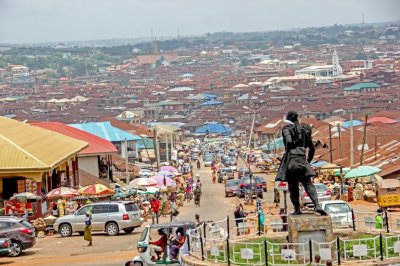Matching Headings (Tìm tiêu đề cho đoạn văn) là dạng câu hỏi rất phổ biến trong bài thi IELTS Reading. Nhiều thí sinh phải vò đầu bứt tai trước những tiêu đề na ná giống nhau và không thể chọn ra được tiêu đề chính xác cho từng đoạn.
Với những mẹo làm bài bên dưới, IELTS SUCCESS sẽ giúp bạn sẽ cảm thấy nhẹ nhàng và dễ thở hơn với dạng câu hỏi này rất nhiều.

Yêu cầu:
Bạn sẽ phải lựa chọn từ danh sách các tiêu đề cho trước để ghép với từng đoạn văn phù hợp trong bài.
Kỹ năng cần có:
- Hiểu nội dung chính của từng đoạn
- Phát hiện được sự khác biệt giữa ý chính và các ý phụ
Mẹo làm bài:
- Thay vì lao vào đọc đoạn văn trước mà không có định hướng, bạn hãy đọc các tiêu đề trước và đừng quên gạch chân vào key words là những từ mang nội dung quan trọng ở tiêu đề.
- Luôn nhớ rằng có nhiều tiêu đề hơn bạn cần nên sẽ có những tiêu đề gần gần giống nhau để khiến bạn bị xao lãng và dễ nhầm lẫn
- Hãy đọc lần lượt từng đoạn văn và tìm ngay tiêu đề cho đoạn đó. Với những đoạn bạn không chắc có thể tạm để 1-2 tiêu đề mà bạn nghĩ tới và làm phương pháp loại trừ sau khi đã tìm hết tiêu đề cho các đoạn khác.
- Với những tiêu đề bạn đã chọn rồi, bạn nên đánh dấu để loại trừ, tránh mất thời gian và tập trung vào những tiêu đề còn lại để tìm ra câu trả lời nhanh nhất.
Hãy thử sức với bài tập bên dưới và đối chiếu câu trả lời của bạn với đáp án để xem bạn đã cải thiện được cách làm bài với câu hỏi dạng Matching Headings đến đâu rồi nhé.
Luyện tập
The reading passage has seven paragraphs:A – G.
Choose the most suitable paragraph headingsB – Gfrom the list of headings on the right.
Write the appropriate numbers(i –ix)in the text boxes below the headings.
NBThere are more paragraph headings than paragraphs so you will not use them all.
List of Paragraph Headings
i. Town facilities
ii. Colonisation
iii. Urban divisions
iv. Architectural home styles
v. Types of settlements
vi. Historical foundations
vii. Domestic arrangements
viii. City defenses
ix. The residences of the rulers
x. Government buildings
Example: Paragraph A Answer: v

Yoruba Town
A.The Yoruba people of Nigeria classify their towns in two ways. Permanent towns with their own governments are called "ilu”, whereas temporary settlements, set up to support work in the country are "aba”. Although ilu tend to be larger than aba, the distinction is not one of size, some aba are large, while declining ilu can be small, but of purpose. There is no "typical” Yoruba town, but some features are common to most towns.
B.In the 19th century most towns were heavily fortified and the foundations of these walls are sometimes visible. Collecting tolls to enter and exit through the walls was a major source of revenue for the old town rulers, as were market fees. The markets were generally located centrally and in small towns, while in large towns there were permanent stands made of corrugated iron or concrete. The market was usually next to the local ruler’s palace.
C.The palaces were often very large. In the 1930’s, the area of Oyo’s palace covered 17 acres, and consisted of a series of courtyards surrounded by private and public rooms. After colonisation, many of the palaces were completely or partially demolished. Often the rulers built two storey houses for themselves using some of the palace grounds for government buildings.
D.The town is divided into different sections. In some towns these are regular, extending out from the center of the town like spokes on a wheel, while in others, where space is limited, they are more random. The different areas are further divided into compounds called "ile”. These vary in size considerably from single dwellings to up to thirty houses. They tend to be larger in the North. Large areas are devoted to government administrative buildings. Newer developments such as industrial or commercial areas or apartment housing for civil servants tends to be build on the edge of the town.
E.Houses are rectangular and either have a courtyard in the center or the rooms come off a central corridor. Most social life occurs in the courtyard. They are usually built of hardened mud and have roofs of corrugated iron or, in the countryside, thatch. Buildings of this material are easy to alter, either by knocking down rooms or adding new ones. And can be improved by coating the walls with cement. Richer people often build their houses of concrete blocks and, if they can afford to, build two storey houses. Within compounds there can be quite a mixture of building types. Younger well-educated people may have well furnished houses while their older relatives live in mud walled buildings and sleep on mats on the floor.
F.The builder or the most senior man gets a room either near the entrance or, in a two storied house, next to the balcony. He usually has more than one room. Junior men get a room each and there are separate rooms for teenage boys and girls to sleep in. Younger children sleep with their mothers. Any empty room are used as storage, let out or, if they face the street, used as shops.
G.Amenities vary. In some towns most of the population uses communal water taps and only the rich have piped water, in others piped water is more normal. Some areas have toilets, but bucket toilets are common with waste being collected by a "night soil man”. Access to water and electricity are key political issues.
569 words
ĐÁP ÁN
|
Paragraph |
Heading |
Topic sentence |
|
Paragraph B |
(vi) - Historical foundations |
B. In the 19th century most towns were heavily fortified and the foundations of these walls are sometimes visible. |
|
Paragraph C |
(ix) - The residences of the rulers |
C. The palaces were often very large. |
|
Paragraph D |
(iii) - Urban divisions |
D. The town is divided into different sections. |
|
Paragraph E |
(iv) - Architectural home styles |
E. Houses are rectangular and either have a courtyard in the center or the rooms come off a central corridor. |
|
Paragraph F |
(vii) - Domestic arrangements |
F. The builder or the most senior man gets a room either near the entrance or, in a two storied house, next to the balcony. |
|
Paragraph G |
(i) - Town facilities |
G. Amenities vary. |
